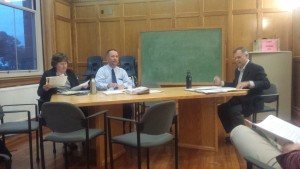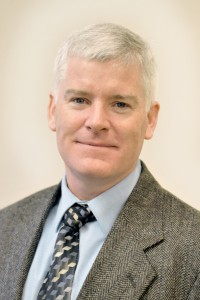WESTFIELD–One proposal saw swift passing in the city’s public health and safety committee meeting last night, while another drew criticism and doubt from the members.
The city council’s public health and safety committee voted on two pieces of legislation last night, showing support for a stretch code ordinance but gave negative recommendations for a complete streets ordinance that was presented to the city council recently.

The public health and safety committee, from left to right: City Councilor Mary Ann Babinski, City Councilor Bill Onyski and City Councilor Dan Allie.
Both pieces of legislature were sent to the legislative and ordinance committee for further discussion and voting, and will be the last step before either can be voted on and enacted by city council.
City advancement officer Joe Mitchell sat with the committee during the first portion of the meeting where he discussed the stretch code and pushed for its acceptance.
“The stretch code is a good idea environmentally, but the large picture is there are five components to becoming a green community,” Mitchell said. A stretch code, which is a set of building regulations for new buildings that minimize energy costs, is one of the components, or criteria for green communities.
The green community designation is one that Westfield is currently striving for. If a city or town becomes a green community, then they are able to apply for grants and additional funding for many projects. A total of nearly $29 million was granted to municipalities this year due to green communities initiatives.
Under the green communities plan by the state, a city or town must meet the following five criteria, according to the mass.gov website:
- Provide as-of-right siting in designated locations for renewable/alternative energy generation, research and development, or manufacturing facilities.
- Adopt an expedited application and permit process for as-of-right energy facilities.
- Establish an energy use baseline and develop a plan to reduce energy use by 20 percent within five years.
- Purchase only fuel-efficient vehicles.
- Set requirements to minimize life-cycle energy costs for new construction; one way to meet these requirements is to adopt the new Board of Building Regulations and Standards (BBRS) Stretch Code.
The stretch code presented to the committee was one that would fit the fifth criterion. Mitchell said that he hopes to have the plan adopted by the city, along with four other plans currently underway that fit the other criteria, so that they can present them in their entirety to the state by Nov. 20. Then, the city could implement the plans by Jan. 1 and be qualified for funding.
In the second half of the meeting however, the complete streets policy that was in front of the committee drew the ire from two members of the committee–Ward 6 Councilor Bill Onyski and At-Large Councilor Dan Allie.
The complete streets policy was initially presented to the city council for consideration by a group called the bike and pedestrian safety commission. If adopted, it would give the city a chance to qualify for more grants and funding, but to gain complete streets designation the concern is that there may need to be further modifications to roads and walkways, which could cost more money.
“Has anyone done a cost analysis on how much we get versus how much we spend,” Onyski asked. “Because we might be spending $1 million to get $100,000 from the state.”
The policy as a whole was passed through to the legislative and ordinance committee by the public health and safety committee, but was tagged with negative recommendations on several pieces in the policy, meaning they are suggesting the committee not vote in favor.
Ward 1 Councilor and committee member Mary Ann Babinski voted in opposition of Onyski and Allie on two of the statements within the policy, meaning that she did not want to give negative recommendations on them. The two statements were:
- “Complete streets design recommendations shall be incorporated into all phases of all publicly and privately funded projects, as appropriate.”
- “Cost alone shall not be considered a valid reason for rejecting further pursuit of such principles or options.”
Both pieces of legislation will be discussed by the legislative and ordinance committee, whose next meeting was not posted by the city at the time of this article.




